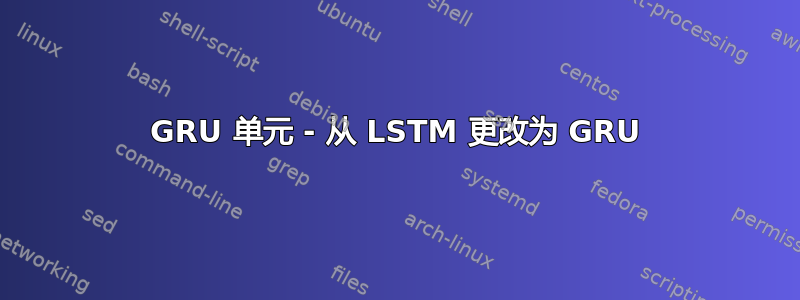
我在 LaTeX 中这样绘制 LSTM 单元格:
\documentclass{article}
\usepackage{tikz}
\usetikzlibrary{positioning, fit, arrows.meta, shapes}
% Command \empt{var1}{var2} to avoid repetition
\newcommand{\empt}[2]{$#1^{\langle #2 \rangle}$}
\begin{document}
\begin{figure}[ht]
\centering
\begin{tikzpicture}[
font=\sf \scriptsize,
>=LaTeX,
cell/.style={
rectangle,
rounded corners=5mm,
draw,
very thick,
},
operator/.style={
circle,
draw,
inner sep=-0.5pt,
minimum height =.2cm,
},
function/.style={
ellipse,
draw,
inner sep=1pt
},
ct/.style={
circle,
draw,
line width = .75pt,
minimum width=1cm,
inner sep=1pt,
},
gt/.style={
rectangle,
draw,
minimum width=4mm,
minimum height=3mm,
inner sep=1pt
},
mylabel/.style={
font=\scriptsize\sffamily
},
ArrowC1/.style={
rounded corners=.25cm,
thick,
},
ArrowC2/.style={
rounded corners=.5cm,
thick,
},
]
% Drawing starts here
\node [cell, minimum height =4cm, minimum width=6cm] {};
% Draw inputs named ibox#
\node [gt] (ibox1) at (-2,-0.75) {$\sigma$};
\node [gt] (ibox2) at (-1.5,-0.75) {$\sigma$};
\node [gt, minimum width=1cm] (ibox3) at (-0.5,-0.75) {Tanh};
\node [gt] (ibox4) at (0.5,-0.75) {$\sigma$};
% Draw operators named mux# , add# and func#
\node [operator] (mux1) at (-2,1.5) {$\times$};
\node [operator] (add1) at (-0.5,1.5) {+};
\node [operator] (mux2) at (-0.5,0) {$\times$};
\node [operator] (mux3) at (1.5,0) {$\times$};
\node [function] (func1) at (1.5,0.75) {Tanh};
% Draw External inputs, named as basis c,h,x
\node[ct, label={[mylabel]Cell}] (c) at (-4,1.5) {\empt{c}{t-1}};
\node[ct, label={[mylabel]Hidden}] (h) at (-4,-1.5) {\empt{h}{t-1}};
\node[ct, label={[mylabel]left:Input}] (x) at (-2.5,-3) {\empt{x}{t}};
% Draw External outputs, named as basis c2,h2,x2
\node[ct, label={[mylabel]Cell}] (c2) at (4,1.5) {\empt{c}{t}};
\node[ct, label={[mylabel]Hidden}] (h2) at (4,-1.5) {\empt{h}{t}};
\node[ct, label={[mylabel]Output}] (x2) at (2.5,3) {\empt{h}{t}};
% Start connecting all.
%Intersections and displacements are used.
% Drawing arrows
\draw [ArrowC1] (c) -- (mux1) -- (add1) -- (c2);
% Inputs
\draw [ArrowC2] (h) -| (ibox4);
\draw [ArrowC1] (h -| ibox1)++(-0.5,0) -| (ibox1);
\draw [ArrowC1] (h -| ibox2)++(-0.5,0) -| (ibox2);
\draw [ArrowC1] (h -| ibox3)++(-0.5,0) -| (ibox3);
\draw [ArrowC1] (x) -- (x |- h)-| (ibox3);
% Internal
\draw [->, ArrowC2] (ibox1) -- (mux1);
\draw [->, ArrowC2] (ibox2) |- (mux2);
\draw [->, ArrowC2] (ibox3) -- (mux2);
\draw [->, ArrowC2] (ibox4) |- (mux3);
\draw [->, ArrowC2] (mux2) -- (add1);
\draw [->, ArrowC1] (add1 -| func1)++(-0.5,0) -| (func1);
\draw [->, ArrowC2] (func1) -- (mux3);
%Outputs
\draw [-, ArrowC2] (mux3) |- (h2);
\draw (c2 -| x2) ++(0,-0.1) coordinate (i1);
\draw [-, ArrowC2] (h2 -| x2)++(-0.5,0) -| (i1);
\draw [-, ArrowC2] (i1)++(0,0.2) -- (x2);
\end{tikzpicture}
\caption{Architecture of an LSTM unit.}
\label{fig:lstm_architecture}
\end{figure}
\end{document}
我得到的输出是:
现在,我需要将此方案更改为 GRU(门控循环单元),但我无法更改此代码来执行此操作。如果可能的话,有人能帮我吗?它应该看起来类似于此:
我对此很陌生,确实需要一些帮助




